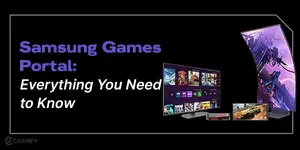Is downloading large files a time-consuming task for your browser? If yes, try using parallel downloading. It lets your browser download files in many streams. The download duration will reduce. There will be hardly any chances where the browser needs to download from scratch.
Today, in this article, we will explain the step-by-step procedure to enable it, so let’s get started!
However, before diving deep into the steps, let us first understand what it is.
Also Read: Amazon Upcoming Sale In India: Sale Dates, Offers, All Details!
What Is Parallel Downloading?
Generally, most browsers use a single thread while downloading files from the internet. This technique works well when the file size is small. But it decreases the download speed when the file size is large. In such a case, parallel download can be helpful.
In it, the large file size will be divided into smaller parts. After that, it gets downloaded through many server connections. It increases the download speed, thus known as multithreading. It makes efficient use of available internet bandwidth.
For example, you want to save a 300MB file, and your browser supports six parallel downloads. In this case, the 300MB file will be divided into six parts. Each is approximately 50MB. All the parts will be downloaded in separate streams. Every part offers 6X the download speed compared to single-thread downloading.
Now you know what parallel downloading is. Let us understand how to enable it individually in various browsers.
Also read: What is Ookla Speed Test? Is It Reliable?
Parallel Downloading In Google Chrome
If you want to enable parallel downloading in Google Chrome, you need to follow the steps below.
Desktop
- First, open Google Chrome, type Chrome://flags, and press enter.
- After that, type parallel downloading and search for it in the Experiments search box.
- Now, from the dropdown menu, select the Enabled option.
- In the final step, click on Relaunch. It will enable it.
Mobile
If you want to enable it on your Android smartphone, follow the below steps.
- First, launch Google Chrome -> Type Chrome://flags -> Search for parallel downloading in the Experiments search box.
- After that, click on Enabled -> Relaunch.
- It’s done!
Parallel Downloading In Microsoft Edge
To activate it in Microsoft Edge, follow the steps below.
Desktop
- Launch the Microsoft Edge
- Type edge://flags -> press Enter
- Now, search for parallel downloading in the Flags Experiments search box -> press Enter.
- Select Enabled from the dropdown menu and click on Relaunch.
Mobile
- Open the Edge browser -> type edge://flags -> press Enter.
- Choose Enabled from the dropdown menu and click the Relaunch button.
Also read: How Does Google Speed Test Work?
Parallel Downloading In Mozilla Firefox
If you use Mozilla Firefox, you must follow the steps below. Enabling it in Mozilla Firefox is quite complicated. By following the below steps will make it super easy for you.
Desktop
- First, launch Firefox -> type about:config -> press Enter.
- The “Accept the Risk and Continue” button will be in the next tab. Click on it.
- After that, you need to type the following command in the search bar and click on Enter.
network.http.max-persistent-connections-per-server
- Now, tap on the Pen icon and change its default value (6) to a higher number. You can set it as up to 20.
- After that, click on the Check icon and restart the browser. It will save the changes you made recently.
Mobile
Are you using an Android smartphone and want to enable parallel downloading? Remember that the stable version doesn’t allow it on Android. For that, you need to use Beta or the Developer version. All the steps to enable it are the same as you do on a desktop.
- Launch the Firefox Beta/Firefox Nightly -> type about:config
After that, enter this command – network.http.max-persistent-connections-per-server.
- Now, change the value from 6 to your preferred value.
- In the end, click on the enter button and restart the Firefox to enable it.
Also read: Explained: What Is A Speed Test And How Does A Speed Test Works?
Parallel Downloading In Brave
If you are a Brave browser user, following these steps:
Desktop
- Open Brave -> type brave://flags -> click Enter.
- Now, search for parallel downloading.
- After that, from the dropdown menu, select Enable option.
- Now, tap on the Relaunch button. It will activate parallel downloading on Brave.
Mobile
You need to follow the same steps to enable it on your Android mobile.
- Launch Brave -> Type brave://flags -> Enter.
- Select Enabled -> Relaunch.
Also read: Bluetooth Explained: Everything You Need To Know
Parallel Downloading In Opera
The Opera browser user needs to follow the steps below.
- Launch the Opera -> Type Opera://flags
- After that, search for parallel downloading.
- Select the Enable option from the dropdown menu and click on Relaunch.
Also read: 7 Best Wi-Fi Internet Speed Test Apps & Websites
While Parallel downloading has many advantages, there are some things that users need to be aware of. Parallel downloading enhances performance, but it may consume more data. Thus, it could slow down the use of other apps on the same network. Ensure you enable it based on your specific needs.
To understand better, we have mentioned some pros and cons of the platform below.
Pros and Cons of Parallel Downloading
Here’s the table:
| Pros | Cons |
|---|---|
| Improves downloading speed. | Can heat up your device. |
| Reduces the chances of download failure. | Consumes more data than single-thread downloading. |
| Less chance of files getting corrupted. | Other apps may run slowly because maximum internet bandwidth is used during downloads. |
| Useful for poor/slow internet connections. | Websites that don’t allow parallel downloading will cause files to be downloaded at normal speed. |
Also read: 5 Best Internet Speed Test Websites and Platforms
Best Alternatives For Parallel Downloading
If your browser’s download options aren’t enough, try a download manager like Free Download Manager or JDownloader. These tools allow faster downloads using multiple threads (up to 16) and work with all browsers, often providing better performance than built-in options.
| Feature | Free Download Manager | JDownloader | Browser Built-in Download |
|---|---|---|---|
| Parallel Downloads | Yes, up to 16 threads | Yes, multiple threads | Limited |
| Works with All Browsers | Yes | Yes | No |
| Speed Boost | Yes, significant | Yes, depending on setup | Limited |
| Best for Large Files | Yes | Yes | No |
| Requires Setup | Yes | Yes | No |
Enabling parallel downloading can speed up large file downloads in most modern browsers. However, the “10x” speed increase depends on good internet speed and server support. Try different settings to find what works best for you!
Final Thoughts
In today’s digital era, a browser is the primary way to download content from the internet. That’s why having the fastest download speed on your browser is vital. For that, you can try using the parallel downloading feature on your browser.
Follow the steps mentioned above. If you have any queries, you can ask us in the comment section below.
Also read: How To Transfer Files From Phone To Laptop: 5 Easy Ways!
FAQs
How do I enable parallel downloading in Google Chrome?
To enable it, type chrome://flags in the address bar and search for “parallel downloading”. Now, select “Enabled” from the dropdown menu, and click “Relaunch” to apply the changes.
Can I enable parallel downloading on mobile browsers?
Yes, you can enable it on mobile browsers like Chrome, Edge, Firefox (Beta/Developer), Brave, and Opera. It is done by accessing their flags to enable the feature. In the end, relaunch the browser.
Does parallel downloading increase speed?
It can enhance download speeds. But, it’s not a solution for slow internet. It may not be effective for all websites. Especially those that restrict concurrent connections to their servers.
Does Parallel Downloading Work Perfectly on All Websites?
Yes. Most websites work. Some websites restrict such connections to save on internet bandwidth and server load.
Is parallel downloading faster?
Yes, parallel downloading can significantly increase speed by downloading different parts of a file simultaneously. Due to simultaneous action, it reduces overall download time.
How do I enable parallel downloading in Opera?
If you have Opera browser in your device and want to activate parallel downloading, follow this: Go to “Settings” > “Advanced” > “Browser” and enable “Parallel downloading” under the “Downloads” section.
Is parallel faster than serial?
Yes, parallel downloading is faster than serial as it divides the file into parts and downloads them concurrently, unlike serial which downloads one part at a time.
Is WiFi serial or parallel communication?
WiFi is a type of parallel communication, as it transmits data across multiple channels at the same time.
How to increase download speed?
To increase download speed, enable parallel downloading, use a wired connection, close unnecessary apps, or upgrade your internet plan.
Also read: How to Increase Internet Speed in PC & mobile
If you’ve just bought a new phone and don’t know what to do with your old phone, then here’s your answer. Sell old mobile to Cashify and get the best price for it. If you are planning to buy a new phone, check out Cashify’s refurbished mobile phones. You can get your favourite phone at almost half price with six-month warranty, 15 days refund and free delivery.
















